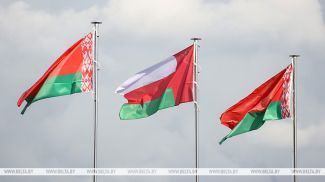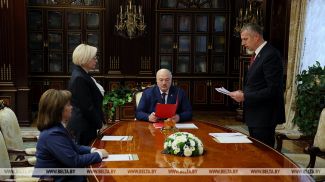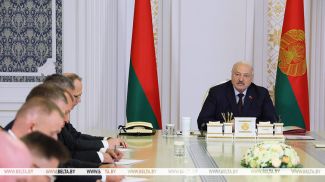
News of the story
"After the Fact: Lukashenko’s Decisions"
The relationship between Belarus and China has long served as a prime example of how interstate cooperation should look like. While U.S. President Donald Trump complains about the extremely tough negotiations with Chinese President Xi Jinping, Aleksandr Lukashenko has been building a truly friendly and warm relationship with the Chinese leader. In previous episodes of our project, we talked about the milestones in Belarus-China cooperation and the projects the two countries are proud of. Today we will look into the main initiative of the two leaders: China-Belarus Industrial Park Great Stone. In this episode you will find out why Belarus and China are building an innovative city of the future near Minsk, whether this multi-billion dollar project is worth the effort, who are resident companies and how they joined the industrial park and why Xi Jinping calls Great Stone the gem of the Silk Road.
Key facts about Great Stone
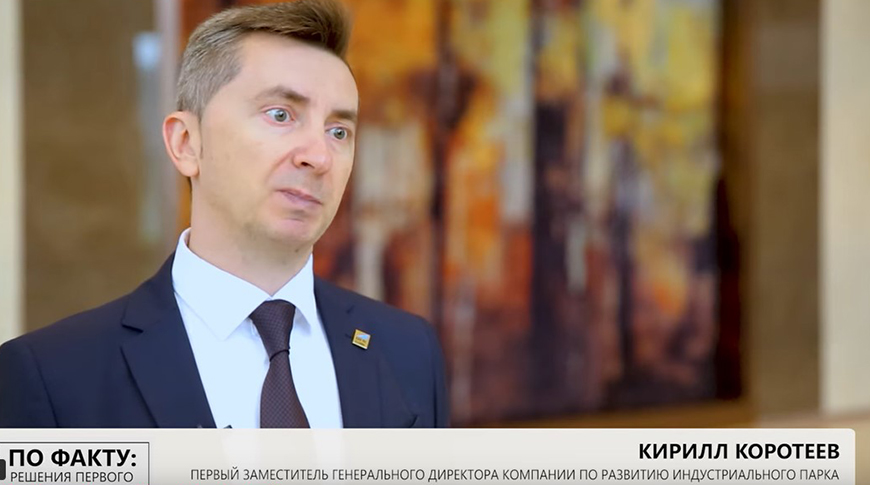
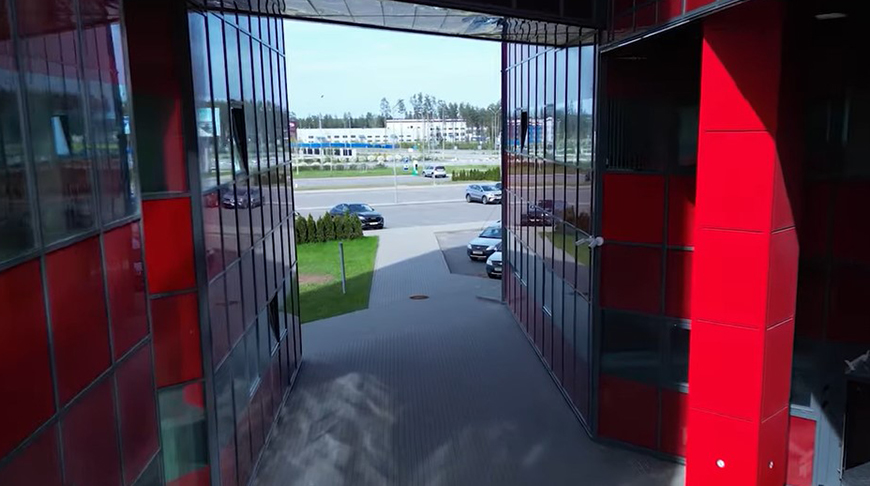
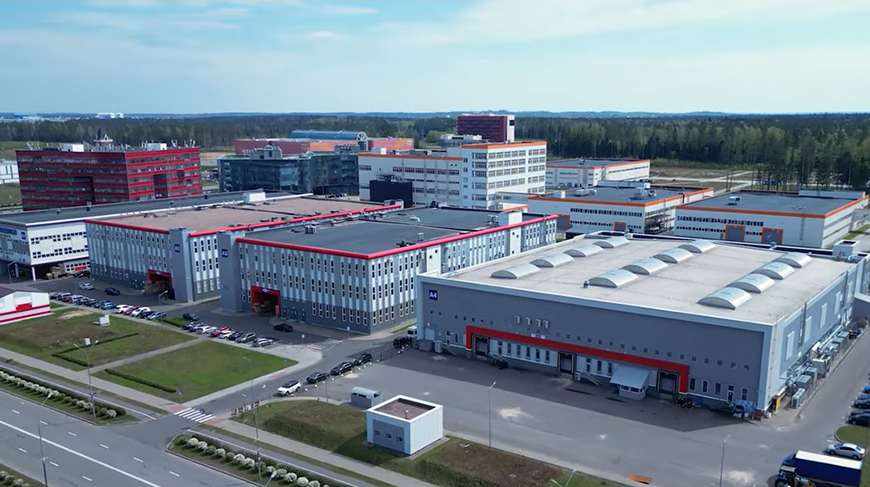
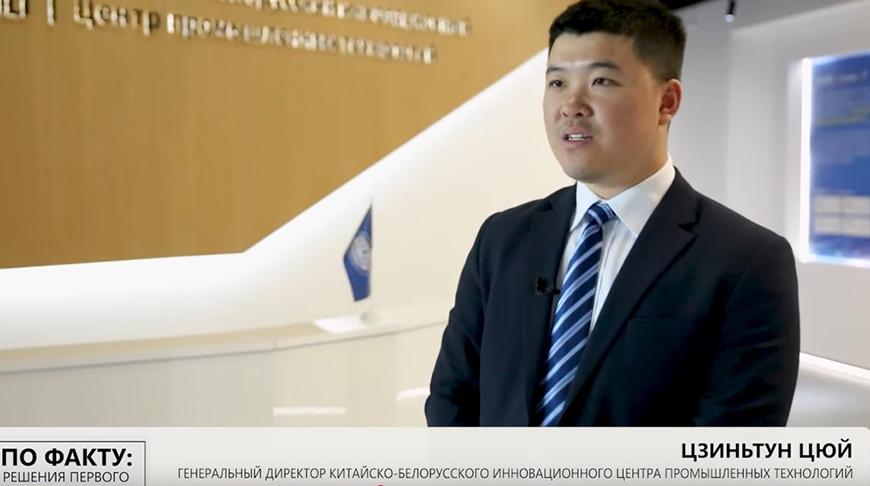
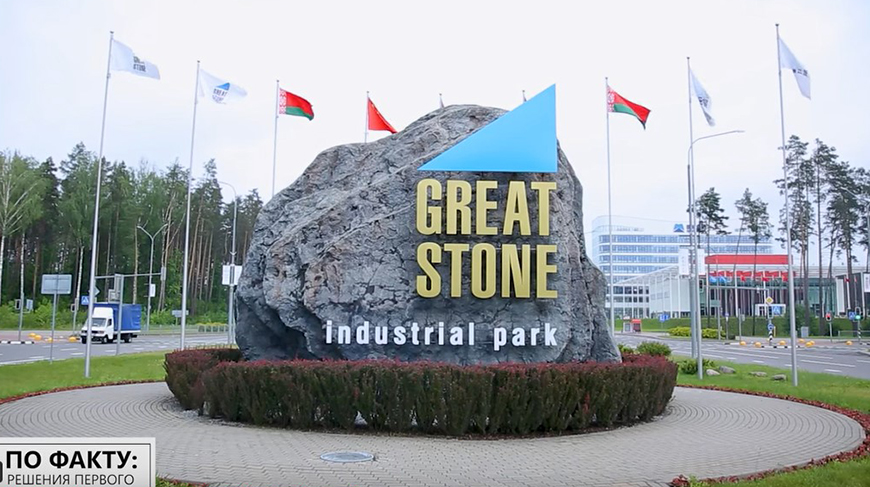
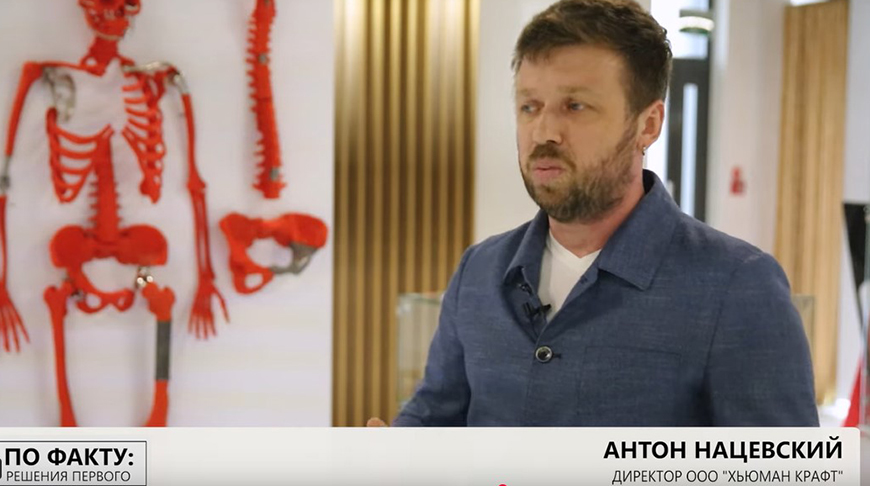
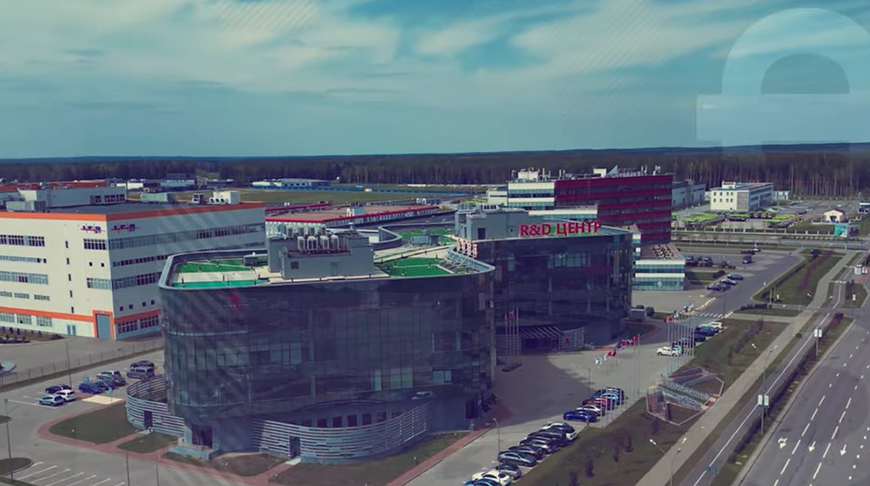


The idea of setting up a China-Belarus industrial park goes back to 2010. It was voiced after the talks between Aleksandr Lukashenko and Xi Jinping in Minsk. At that time, the Chinese leader visited Belarus in the capacity of Vice President of the People's Republic of China. A year and a half later, the countries signed an intergovernmental agreement. The document came into force in January 2012, after ratification procedures were completed.
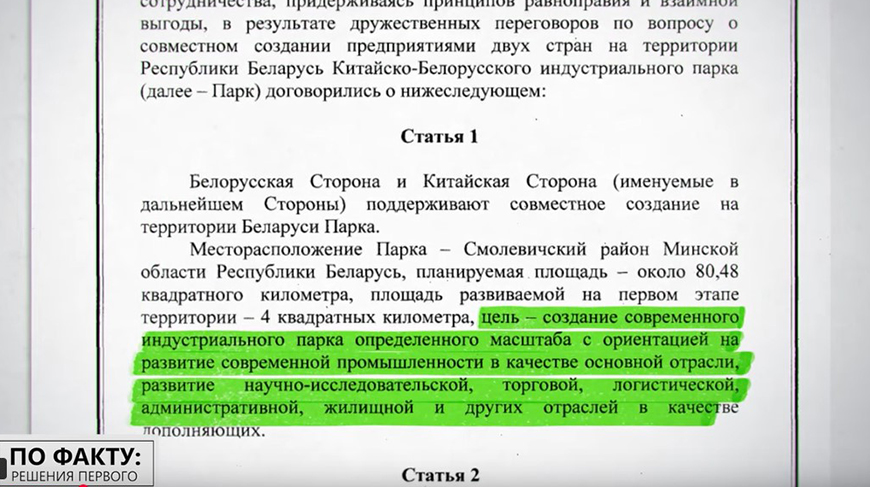
Great Stone is based 25 kilometers from Minsk, in close proximity to the international airport, railroads and the Berlin-Moscow transnational highway. The industrial park operates a special legal regime, which makes it comfortable for business and attractive for investment.
“This project is really a big deal. I did not think everything would work out. These are tens of billions of dollars in investment. In no other country has China done this. The park will host the most advanced production facilities. Prospects are very good.The project has made a lot of noise. The arrival of China here, at the center of Europe, has created quite a stir. But there’s nothing to be concerned about. We are not cooperating with China to hurt someone. We are cooperating for the good of our people. We do not want to scare anyone; this is not our goal. Yet, we see China coming here and making huge investments as a factor of the security of our state,” Aleksandr Lukashenko said at a press conference in December 2011.

Great Stone is based 25 kilometers from Minsk, in close proximity to the international airport, railroads and the Berlin-Moscow transnational highway. The industrial park operates a special legal regime, which makes it comfortable for business and attractive for investment.
“This project is really a big deal. I did not think everything would work out. These are tens of billions of dollars in investment. In no other country has China done this. The park will host the most advanced production facilities. Prospects are very good.The project has made a lot of noise. The arrival of China here, at the center of Europe, has created quite a stir. But there’s nothing to be concerned about. We are not cooperating with China to hurt someone. We are cooperating for the good of our people. We do not want to scare anyone; this is not our goal. Yet, we see China coming here and making huge investments as a factor of the security of our state,” Aleksandr Lukashenko said at a press conference in December 2011.
In the summer of 2014, a groundbreaking ceremony took place in the industrial park. More than fifty top managers representing the world's leading companies from different countries attended the event. The Great Stone industrial park was devised as a powerhouse for cutting-edge research and manufacturing. New knowledge would be generated here and thousands of people would learn advanced professional skills, said Belarusian Prime Minister Mikhail Myasnikovich.
A year later, the construction site was inspected by the leaders of Belarus and China. It was then that Xi Jinping called the industrial park a gem of the Silk Road. This date is now regarded as the official birthday of Great Stone.
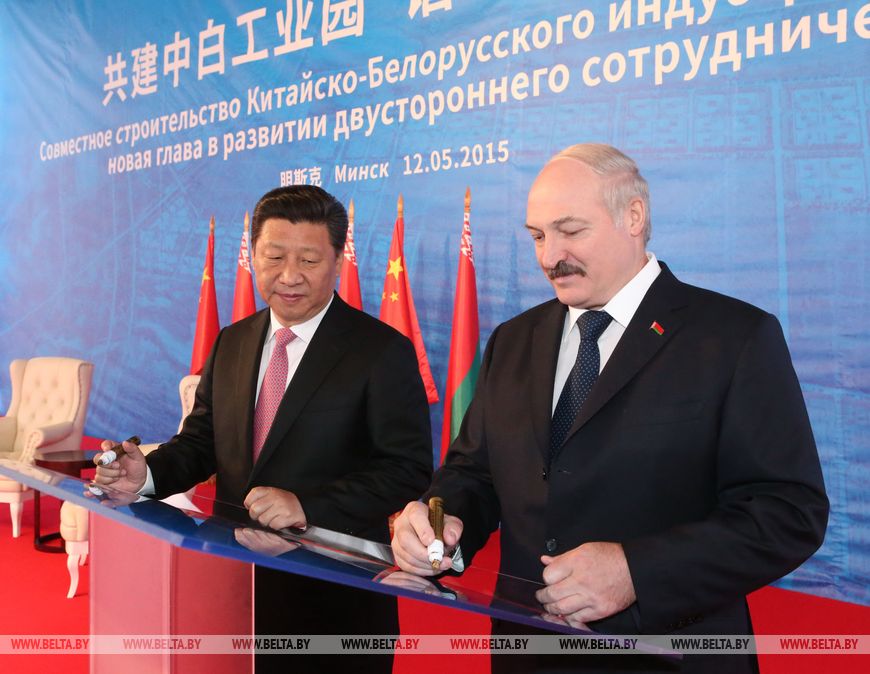
Forbes experts dubbed the industrial park an emerald of Belarus' economic growth. No wonder! The total cost of the project, the scale of which is so large that the implementation will span decades, is estimated at billions of dollars.
How many resident companies does Great Stone have?
Today, more than 150 resident companies operate in the park. Now Great Stone has the territory as large as 850 hectares, but 10 years ago there was a forest and a swamp here. At the onset, the portfolio of the Industrial Park Development Company was estimated at millions of dollars, but over the years it skyrocketed 400 times. That said, only 8% of its territory has been utilized so far.
“This year we are proceeding to the second stage. This involves about 400 hectares of land. We are starting to build a large railway container terminal. This will be a landmark project and one of the centerpieces of the Silk Road and the park. We will continue to build housing for employees, ramp up production - first of all, a pharmaceutical cluster, biotechnology, mechanical engineering. These are our priorities, our main goals,” said Kirill Koroteyev, First Deputy Director General of the Industrial Park Development Company.
A year later, the construction site was inspected by the leaders of Belarus and China. It was then that Xi Jinping called the industrial park a gem of the Silk Road. This date is now regarded as the official birthday of Great Stone.

Forbes experts dubbed the industrial park an emerald of Belarus' economic growth. No wonder! The total cost of the project, the scale of which is so large that the implementation will span decades, is estimated at billions of dollars.
How many resident companies does Great Stone have?
Today, more than 150 resident companies operate in the park. Now Great Stone has the territory as large as 850 hectares, but 10 years ago there was a forest and a swamp here. At the onset, the portfolio of the Industrial Park Development Company was estimated at millions of dollars, but over the years it skyrocketed 400 times. That said, only 8% of its territory has been utilized so far.
“This year we are proceeding to the second stage. This involves about 400 hectares of land. We are starting to build a large railway container terminal. This will be a landmark project and one of the centerpieces of the Silk Road and the park. We will continue to build housing for employees, ramp up production - first of all, a pharmaceutical cluster, biotechnology, mechanical engineering. These are our priorities, our main goals,” said Kirill Koroteyev, First Deputy Director General of the Industrial Park Development Company.

About $1 billion has been invested in Great Stone since the project was launched. State budget spending accounted for less than 5%. In other words, every Br1 invested by Belarus netted Br21 in investments, primarily from foreign sources. The investments have already paid off.
A special legal regime in the industrial park will be running through 2062. By that time, Great Stone is expected to grow into a real satellite city, with a population of about 100,000. There are a lot of similar projects in China, where large cities have grown out of small fishing villages thanks to the benefits and preferences provided to manufacturing companies.

“The park has proved its worth. We are efficient. We have a future, prospects and momentum. We have companies from 15 countries in the park, and we continue expanding the geography. For example, this year we have welcomed companies with Turkish and Swiss capital. The park is not only about China-Belarus companies. We want to grow into an international city, an international project,” Kirill Koroteyev said.
What does the industrial park do?
The key strategy to attract companies to the Great Stone industrial park has remained unchanged over the past decade: the emphasis is placed not on quantity but on a high level of technological advancement. As a result, the park’s resident companies are engaged in production of electronics, new materials, laser equipment, unmanned systems, pharmaceuticals, in big data processing, telecommunications, biotechnology, and mechanical engineering. Over time, entire technological clusters have emerged in the park. The largest clusters currently specialize in mechanical engineering and healthcare.

Qu Jintong, Director General of the China-Belarus Innovation Center for Industrial Technologies noted that the Great Stone Industrial Park is a key joint project of China and Belarus within the framework of the Belt and Road Initiative. It was created with the personal support of the heads of state and has become the largest overseas industrial site of China and a model of high-level bilateral cooperation.

“For more than 10 years, the industrial park has grown into a zone of active development of high technologies. We chose Great Stone as a site for the China-Belarus Center with a view to integrating into the industrial ecosystem here, establishing effective interaction with high-tech and innovative companies, and implementing the principles of resource exchange and complementary advantages. Additional factors were a well-developed management system, a single public services center and significant tax benefits to residents. The well-developed infrastructure and transport accessibility create a favorable environment for technological exchange, research and development. We feel secure and comfortable in this environment and we believe in the bright future of this project,” Qu Jintong said.

The China-Belarus Innovation Center for Industrial Technologies is a platform for scientific and technological cooperation, established by the Guangdong Academy of Sciences and the National Academy of Sciences of Belarus within the framework of the Belt and Road Initiative. The center acts as a bridge and link in the area of science and technology between the two countries and their academies. Its main focus is to overcome information barriers in China-Belarus cooperation in science and technology, provide services to coordinate technological demand and supply, support and develop scientific innovations, and organize bilateral visits and exchanges.
“These efforts contribute to the practical implementation of scientific achievements and help address cross-border technology transfer and commercialization challenges. Since its founding, the center has become a platform for cutting-edge projects, including the development of a new generation of China-Belarus atomic force microscopes, the creation of a high-strength copper-chromium-zirconium alloy, and the advancement of an environmentally friendly filtering material. These achievements are the result of professional support for scientific developments and an effective incubation model. The innovations have found wide applications in precision engineering, environmental protection, healthcare, and modern agriculture. They are fully aligned with the strategic needs of the two countries, they contribute to the effective integration of scientific resources of China and Belarus, and enhance industrial development,” the director general said.
Another resident of the Great Stone Park - HUMAN CRAFT is engaged in implant manufacturing, for cancer patients. According to Director Anton Natsevsky, there were several European manufacturers on the market. They took time (about a month) to make estimates about how long it would take to produce this or that thing and got it delivered within three months. During this time, the patient is undergoing chemotherapy, and most likely he or she may not live to see the implant.

"We take two weeks to manufacture bespoke implants and ship them to a customer. Our state benefits from it because we're helping it to deal with a huge problem of shortage of customized products. The first institution we started to work with was the Alexandrov National Cancer Center. We have branched out into the production of jaw implants, bone reconstruction. We have developed some standard products that go into production on order but still our thing is ‘bespoke’,” Anton Natsevsky said.
What is the average salary in the Great Stone park?
Launching an industrial park is one thing. But how does it benefit the economy and the people? That’s the thing that concerns Aleksandr Lukashenko the most. The investments from the state budget have paid off five times already thanks to tax revenues. As for businesses, according to Q1 2025 data, the park's resident companies earned almost Br100 million. Their profits clock an exponential increase every year. Average profitability is about 30%. In other words, businesses are getting payback from investments. Wages in Great Stone are 1.5 times above the national average. This is also a very important factor. It should be noted that out of 152 companies registered in the park, only 55 have already launched their operations. The rest are still designing and building their production facilities.
“Belarus has become Europe’s first country and one of the first states in the world to join the Silk Road Economic Belt project. Belarus and China have been promoting the Great Stone Industrial Park project as part of the Community of Common Destiny initiative. This idea is already being materialized. The park is being built as a city of the future: eco-friendly, innovative and comfortable for people to live and work. The two countries are developing both infrastructure and laws for this Silk Road Economic Belt hub,” Belarusian President Aleksandr Lukashenko stated a few years ago.

By 2030, the park’s administration expects the number of resident companies to grow to 270, with total investment in the industrial park reaching $1.5 billion. The declared volume of investment from resident companies is expected to exceed $2 billion this year.
“Our main goal is to build an industrial city here: an environmentally friendly, digital city of the future, where people (over 85% of whom are citizens of our country) can acquire new skills, pursue exciting professions and fully realize their potential. I believe that in the future, this international satellite town of Minsk will become not only a gem of the Silk Road but also a symbol of the Republic of Belarus,” Head of the Administration of the China-Belarus Industrial Park Great Stone Aleksandr Yaroshenko said.
Why does Belarus need Chinese technology?
The Chinese technologies are beneficial not only for the Great Stone industrial park but also for Belarus as a whole. This is why cooperation in innovation has become a key focus in the development of interstate relations. Together, Belarus and China are achieving significant scientific breakthroughs and advancing promising developments.

“The high-tech enterprises coming here from the People's Republic of China are giving strong momentum to our economy. These companies produce engines, gearboxes, and construction equipment. The main task going forward is to ensure that enterprises across Belarus actively participate in our project and production chains. Our Chinese partners have high standards, but participation in these projects can become a major growth driver for Belarusian enterprises beyond the Great Stone park,” Aleksandr Yaroshenko remarked.
Over the past decade, the China-Belarus project has taken a special place in the country’s economy. It is rightfully regarded as an important element of national economic security. The Great Stone park is considered a model of interstate relations and serves as an excellent example of how to cooperate for the benefit of countries and people rather than unite against others.





